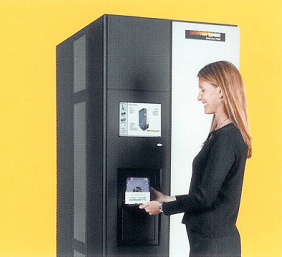| Українська | English | |||||||||||
|
|||||||||||
| News | About company | Service-centre | OB Van/SNG Rental | NextGen Energy Solutions | Contact us |
|
|
Engineering Service, Inc.
»
Catalog
»
Archive solutions
» XenData Digital Archive managment systems. XenData Digital Archive managment systems.
Until recently,an automated digital video archive was expensive and required highly proprietary solutions. Consequently, m Standard Windows File System. Nearline disk, nearline tape and offline tape cartridges are presented as a Windows logical drive letter. Video files are written to and retrieved from the archive as though from a standard magnetic disk drive. The digital archive accepts all file types, for example MPEG, AVI, MXF and presents them in a Windows file system.
Industry Leading Tape Formats. The physical tape format may be LTO, DLT or SAIT - the leading formats in the IT industry. Tape Interchange File Format. The file format used to write to the tape is the industry standard TAR. This ensures that files may be read Network protocols. The software is optimized for standard Windows network protocols and FTP file transfers. Industry standard file security. The file server integrates fully with the Microsoft Windows security model, based on Active Directory. This makes it easy to ensure that video file access is limited to authorized users.
Our strong adherence to industry standards means that the digital video archive will seamlessly interface with your changing standards-based digital infrastructure. Tier 2 Nearline magnetic disk arrays.
Tire 3 Nearline data tapes held within the robotic tape library.
XenData Software Functionality.The use of a standard Windows file system interface means that the archive is easy to implement within your overall system architecture. Furthermore, it means that multiple applications can simultaneously writing to and reading from the archive. Additional functionality includes: File Transfer at Many Times Real Time. Video files are transferred to and from the archive over the network at many times real-time. High speed transfers minimize workflow bottlenecks which is especially useful in broadcast facilities. The solution is optimized for FTP and standard Windows network transfers.
Partial File Restore for All File Types. The solution supports partial retrieval of large video files of all types. When partial files are requested, th tape is driven rapidly to the beginning of the required section and onlt the fragments of a file are retrieved. Manages Nearline Disk, Nearline Tape and Offline Tape. The administrator defines policies for RAID caching that can be tailored to the different file types and folders. For example, proxies may be retained permanently on nearline magnetic disk while high resolution video files are held only on data tape.
Data Protection via Tape Replication. The software automatically generates replica tape cartridges that may be exported from the library for off-site retention. The system can be rapidly rebuilt from tape in case of disaster recovery. Digital video archives running XenData software are scalable in so many ways. The software supports both scalable tape libraries and multiple libraries. If the library hardware can be expanded by adding extra tape cartridge slots, the software is easily upgraded to manage the extra capacity. Alternatively, an additional tape library can be added to increase the archive capacity.
Scalable from Terabytes to Petabytes. |
||||||||||||||||||||||||||||||
|
||||||||||||
| Special Offer | ||
 |
||
 |
PTZ Camera | |
 |
405 000грн | |
 |
+38 (044) 593-18-20 +38 (073) 593-18-20 +38 (096) 532-96-82 +38 (095) 532-96-82 Service center Telegram @Engineer_Service |

|
|
|||||
 |
e-mail: engineer-service.tv 15 Vavylovykh str., Kiev, 04060, Ukraine Authorized service centre of Panasonic, Sony, JVC, Fujinon, Canon |
|||||||


 ost video archives still consist of Beta, VHS and DV tapes, making video assets much less accessible and hence less useful than they could otherwise be.
ost video archives still consist of Beta, VHS and DV tapes, making video assets much less accessible and hence less useful than they could otherwise be.
 Implementing an Automated Digital Video Archive
Implementing an Automated Digital Video Archive


